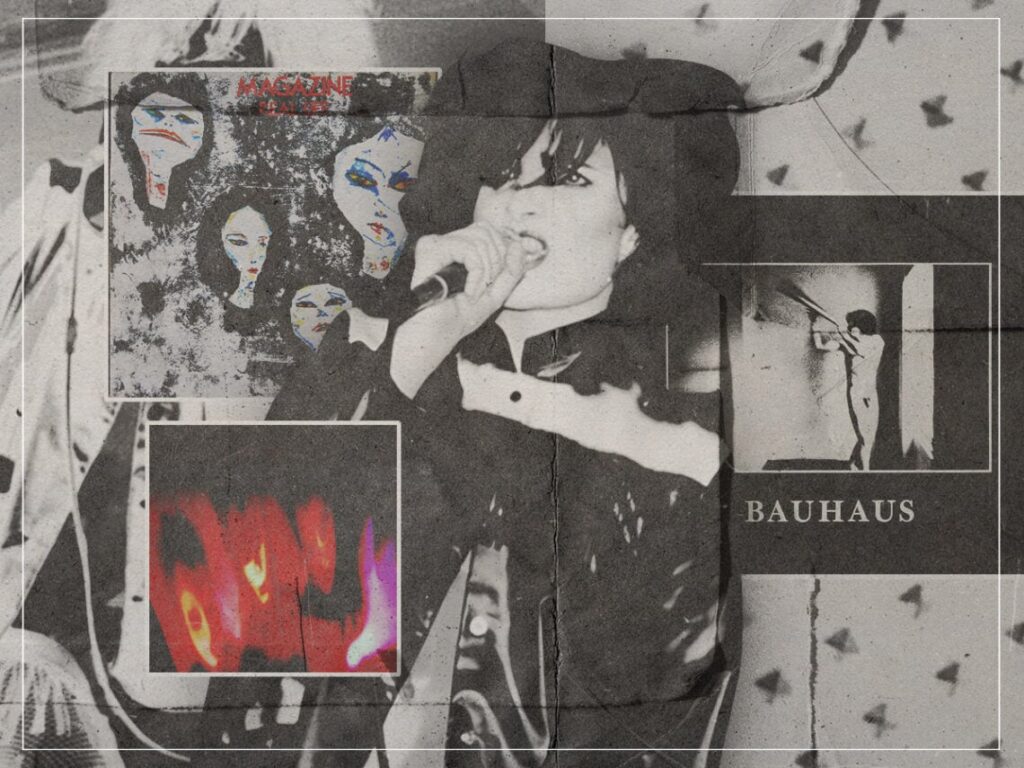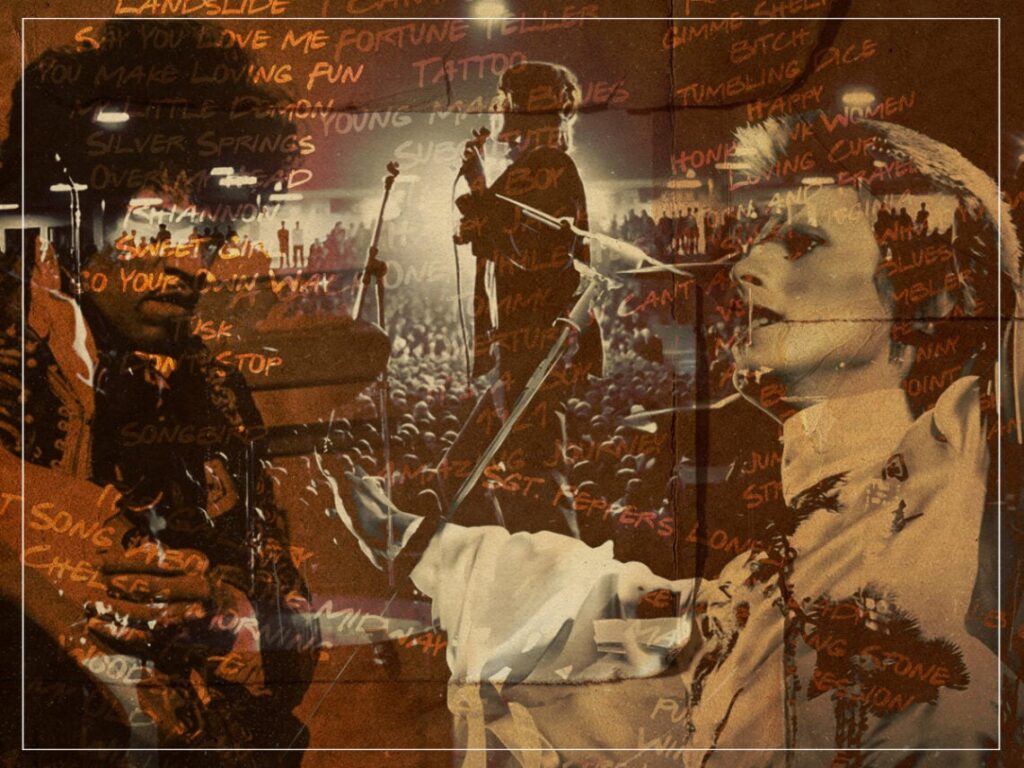Five Easy Masterpieces: an introduction to gothic rock
 Posted On
Posted On
Tombstones, cobwebs and Robert Smith’s frizzy locks come to mind first when I think of gothic music. I’m not sure what the collective term for goths is, but at school, a flock, or murder, of goths would lurk quietly on the playground looking dutifully sombre, plaid and pierced. However, there is much more to the art’s gothic enclave than dressing up like Wednesday Addams.
As enhanced by the Mighty Boosh episode ‘Nanageddon’, The Cure are usually regarded as the initiators of the gothic rock phenomenon that swept the musical landscape at the end of the 1970s. The band’s dark trilogy of albums, from Seventeen Seconds to Pornography, is regarded as eternally representative of the genre. However, Smith doesn’t think of himself as a gothic trailblazer for some reason.
In a past interview with Rolling Stone, the frontman discussed his gothic connexions, noting Siouxsie and the Banshees as another group commonly associated with the tag. “I don’t think of the Cure as a goth band,” he said. “I never have. I grew up in a world where goth hadn’t quite been invented in the way that we know and love it. And I was part of this subculture in as much as I went to the Batcave with [Steve] Severin”.
The music video for ‘Lullaby’ tells an entirely different story, but Smith is certainly correct in asserting that he wasn’t an originator. “The Banshees were pretty much a goth band for a while, but even they really weren’t,” he added. “But real goth bands were around — the ones that were part of that initial movement.”
Continuing, Smith recognised the gothic tone of his early material. “So we’d done Pornography and ‘Hanging Garden’, and there’s a look and a kind of a vibe and an atmosphere, yeah. But was I responsible for goth? No. And if I was, I’d be very happy. But I wasn’t.”
A band more archetypal of the gothic wave was Bauhaus. Led by Peter Murphy, the Northampton outfit emerged from the post-punk era with a decidedly dark and sordid visage. Their debut single, ‘Bela Lugosi’s Dead’, is commonly regarded as the first gothic rock song of the wave. With lines like, “Bela Lugosi’s dead / The bats have left the bell tower / The victims have been bled,” the song positively oozed Stokerian darkness, bringing past triumphs of gothic literature and cinema to music for the very first time.
As far as I am concerned, The Cure join Bauhaus and Siouxsie and the Banshees as early proponents of the goth rock wave. Even if the artists don’t consider themselves responsible, their enduring influence in the field says otherwise.
Five essential gothic rock albums:
5. Magazine – Real Life
As a co-founding member of Buzzcocks, Howard Devoto played an instrumental role in bringing punk to Manchester. After leaving Pete Shelley to helm Buzzcocks, Devoto scraped together Magazine, falling on his feet with guitarist John McGeoch as he sought a more artistic approach to punk. Between 1977 and 1981, the band outlined the distinction between punk and post-punk, infusing the raw genre with instrumental oddities and compositional complexity.
Each Magazine album has its respective merits, and they all deserve a thorough listen. Today, I’m picking out the 1978 debut, Real Life, because it is the band’s most consummate product and most commonly associated with the gothic subgenre. Devoto doesn’t explicitly reference tombstones and cobwebs, but the atmosphere is unmistakably moody, teeming with existential anxiety.
4. Siouxsie and the Banshees – Juju
In their 1981 masterpiece album, Siouxsie and the Banshees brought some dark magic to their gothic sound. The band’s previous album, Kaleidoscope, had been blessed by the new addition of Magazine’s John McGeoch on guitars, but Juju saw the new formation reach its full stride in an accessible yet progressive product of punk innovation.
The band has disputed associations with the gothic rock wave on several occasions. Still, with Siouxsie Sioux’s make-up and songs like ‘Halloween’ and ‘Night Shift’, one can see where the comparisons arise. Gothic or not, Juju is essential listening for everyone, with highlight tracks such as ‘Spellbound’ and ‘Into the Light’.
3. The Cure – Pornography
As previously established, Robert Smith doesn’t regard The Cure as a gothic rock band. I would agree that the band is much more than this, but 1983’s Pornography is definitely gothic in nature and one of the decade’s finest releases. In the naivety of youth, I imagined the gardens of Babylon when listening to ‘The Hanging Garden’, but its inference of suicide caught up with me in adulthood.
While recording Pornography, The Cure took a wanton dive into desolation and depression, taking frequent doses of LSD and holding some sessions in grimey toilet cubicles. Compounded by heavy drinking and drug use, the album marked a fractious period for the band that led to a hiatus. “I really thought that was it for the group,” Smith reflected in Never Enough: The Story of The Cure. “I had every intention of signing off. I wanted to make the ultimate ‘fuck off’ record and then sign off.”
2. The Sound – From the Lion’s Mouth
This is undoubtedly the least well-known of my selections, but perhaps it shouldn’t be. The Sound joined the post-punk wave alongside Joy Division and The Cure, releasing similarly accessible and artistically alluring material, but never seemed to attain much more than a cult following. They remained prolific throughout the 1980s, aligning with contemporary pop trends as dictated by U2 and Simple Minds.
Tragically, the frontman Adrian Borland committed suicide in 1999 by jumping in front of a train at Wimbledon Station. As his lyrical material suggests, Borland struggled with depression compounded by his band’s failure to break through commercially. The band’s first two albums, Jeopardy and From the Lion’s Mouth, are essential, but I direct you to the latter as the overall masterpiece and the most gothic of the two.
1. Bauhaus – In the Flat Field
After stirring the gothic rock wave into action with their 1979 debut single, Bauhaus set about recording a debut album. Although In the Flat Field doesn’t bear a striking resemblance to ‘Bela Lugosi’s Dead’, it retains the unsettling, macabre edge. Daniel Ash’s innovative guitars are intense and industrial throughout, meeting Peter Murphy’s anguished vocals in perfect harmony.
Bauhaus welcomed the gothic label more enthusiastically than The Cure and Siouxsie and the Banshees, with Murphy often cutting a lean, cadaverous silhouette on stage. In the Flat Field is a balanced masterpiece, but the title track and ‘Double Dare’ stand out as heavier highlights. Meanwhile, ‘The Spy in the Cab’ is a perfect example of the band’s less attacking, slow-crawling essentials.


